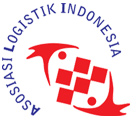Transportation Management Boosts Load Routing, Reduces Emissions
Leslie D. Mandrell & George M. Luostari
Transportation ManagementIn trucking and logistics, a proven way to decrease a shippers costs - and its carbon footprint - is to consolidate loads and reduce miles per trip. Said another way, poorly optimized networks result in excess weight, miles and number of trips, which drives up costs - and greenhouse gas emissions (GHG).
As the economy continues to improve and more freight is moved, many organizations are missing the cost and carbon emission benefits borne from load consolidation and network optimization.
Since around 2000, transportation management analysts have used transportation planning applications to review customer orders across contracted carriers. These applications use algorithms or formulas to consolidate freight and routes into the most efficient and optimal route plans.
By comparing freight charges for multiple modal possibilities, including trucking, air freight and rail, and for packages, Less Than Truckload Shipping (LTL) and Full Truck Load (FTL), analysts determine the best possible shipping combinations. The planner also works with diesel and alternative fuels.
Analysts first test various routes and track specific algorithms, based on specific clients or lanes. They also take into consideration existing business rules, which may dictate or impact shipping. Once the ideal load or route configuration is determined, the algorithm is set.
Transportation management, however, is no set it and forget it solution. Each month, analysts revise loads and routes to uncover additional savings. It's a continuous improvement process. By tracking optimization over the customer lifecycle, analysts may find further cost savings and reduce gas emissions further. For their part, customers often will seek further adjustments over time as routes, loads or needs change.
Organizations who want to reduce GHG can embed carbon footprint metrics in the model. This can provide customers with positive sustainability and carbon KPIs for their quarterly business reviews. Retail and consumer-facing customers also find the positive impact on carbon emissions can help them highlight sustainability initiatives to their audiences or stakeholders,
Few companies currently use transportation management optimization. Instead, most rely on less-efficient, yet more convenient freight brokering. However, transportation management presents an effective way to both improve cost efficiency and reduce environmental impact, especially as sustainability measures continue to make their way on to performance scorecards.
What's more, as organizations realize business rules may unnecessarily conflict with optimization, the willingness to challenge the rules may present even better returns.
Think of a transportation planner not as a tool, but as a system. To maximize its effectiveness, organizations should work closely with analysts to seek solutions that improve efficiency, enhance cost savings and reduce carbon emissions. In the end, the results could please stakeholders from across the organization.
http://blog.ryder.com/2015/05/transportation-management-delivers-savings/









